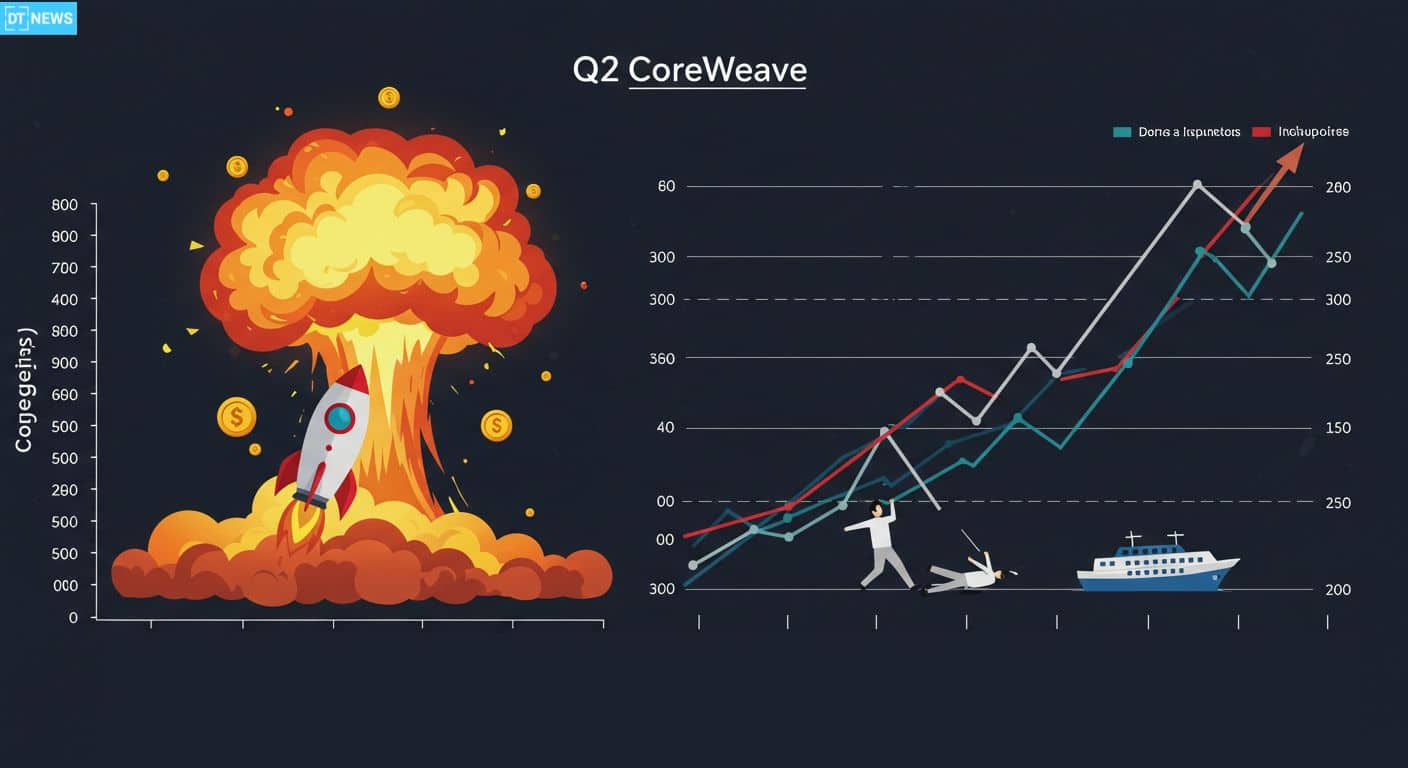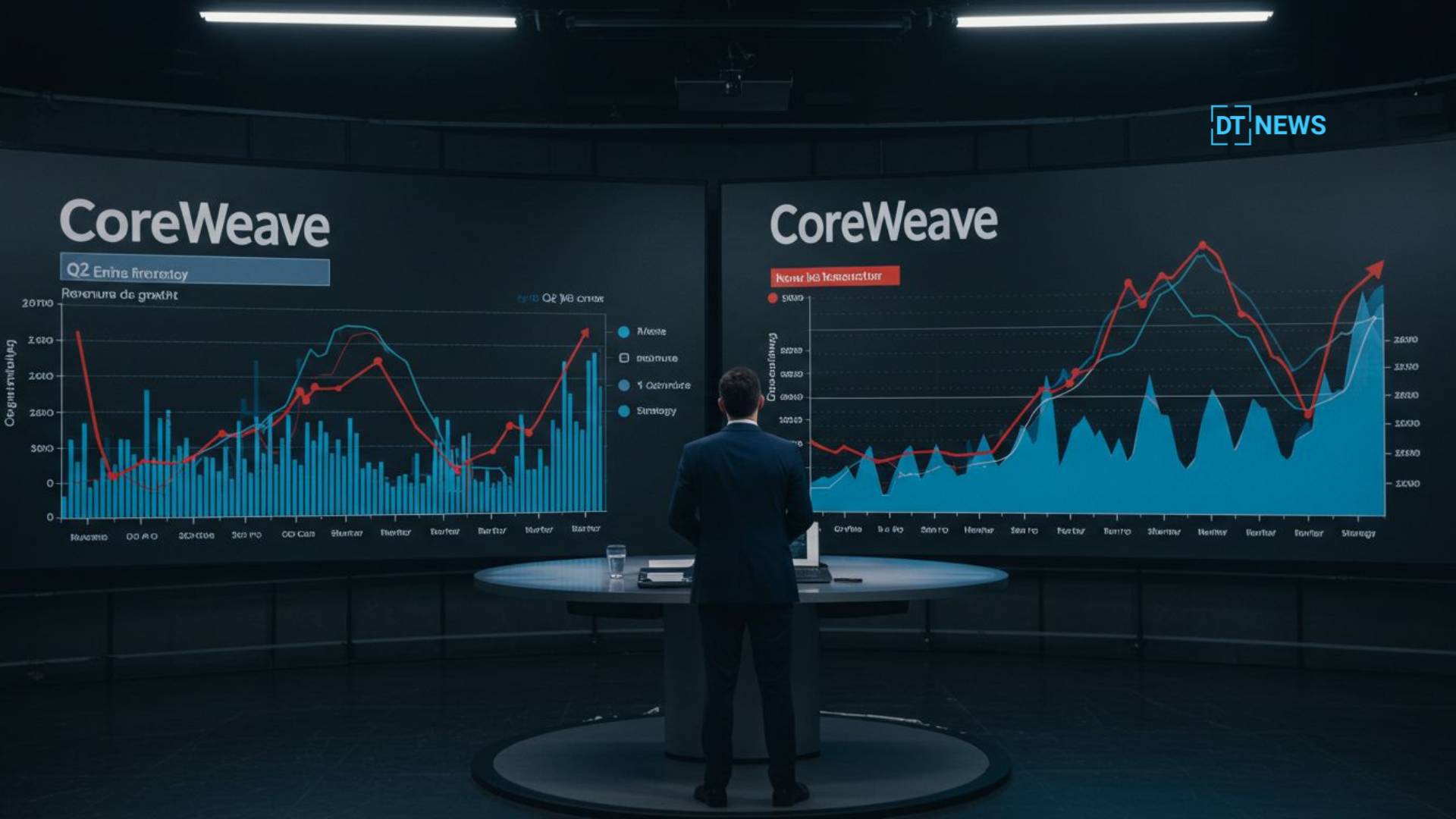CoreWeave Q2 earnings performance has drawn both applause and scrutiny for revenue growth and strained profitability, respectively. The company reportedly raked in roughly $1.21 billion in revenue; a 3x year-over-year growth driven by AI demand. But beneath the surface, margins were thinning, losses were mounting and a controversial $9 billion acquisition was hanging over everything.
- Revenue Soars, But Cost Reality Bites
- CEO Says Demand is Skyrocketing But the Cost of Scale is Looming
- Strategic Overhang: Shareholder Dissent Clouds $9 Billion Deal
- Future Outlook: Backlog and Forecasts Offer a Glimpse of Stability
- Conclusion
- FAQs
- Why did CoreWeave’s stock drop after reporting growth?
- What’s behind the high operating costs?
- What’s the controversy over the Core Scientific deal?
- How safe is CoreWeave’s future revenue?
- Glossary
Revenue Soars, But Cost Reality Bites
The company reported $1.21 billion in revenue, beating estimates and jumping by a remarkable 206% over the previous year. This confirmed CoreWeave’s success in capturing the demand for GPU-powered AI compute; especially from big clients like OpenAI, Microsoft and Meta.
However, investors recoiled at the root numbers: a $290 million net loss driven by nearly $1.19 billion in operating expenses; up from $317.7 million a year ago. The company’s adjusted operating income of $200 million couldn’t hide a 2% margin, down from 20% a year ago.
Shares reportedly fell between 6-11% in after-hours trading, a terrible sign for a stock that’s up 200% since March IPO.

CEO Says Demand is Skyrocketing But the Cost of Scale is Looming
Co-founder and CEO Michael Intrator called the results “scaling rapidly”.
“We’re scaling fast to meet unprecedented demand for AI” he said.
But he also acknowledged infrastructure bottlenecks especially around power supply to support the growth.
Capex reached a record $2.9 billion for Q2, stressing CoreWeave’s capital intensive model and a vulnerability in the cash flow structure.
Strategic Overhang: Shareholder Dissent Clouds $9 Billion Deal
CoreWeave’s attempted acquisition of Core Scientific is still under fire. Two Seas Capital, the largest active shareholder in Core Scientific, led the charge against the deal, calling it “inadequate” and undervalued given Core Scientific’s core infrastructure value and contribution to AI infrastructure demand.
Analysts say the deal structurally favors CoreWeave’s investors and exposes Core Scientific shareholders to volatility, especially with the CoreWeave lock-up expiration approaching.
Future Outlook: Backlog and Forecasts Offer a Glimpse of Stability
Despite the short-term worries, it appears that CoreWeave is amassing a big revenue backlog, around $30 billion, from multi-year compute contracts. This provides forward visibility as these commitments convert to revenue when capacity comes online.
The company’s guidance forecasts Q3 revenue to be between $1.26-$1.3 billion and full year topline between $5.15-$5.35 billion, both ahead of estimates.

Conclusion
Based on the latest research, CoreWeave Q2 earnings reveals a mixed reality. Demand is explosive, margins are tight and the strategy is unclear.
While the $30 billion backlog and big AI contracts prop up the company’s growth story, the costs and consolidation risks exposed by the Core Scientific merger opposition seem to be the reality.
For in-depth analysis and the latest trends in the crypto space, our team offers expert content regularly.
Summary
CoreWeave’s Q2 crushed revenue expectations, tripling to $1.21 billion and way above forecasts. But high costs, a near $290 million net loss and compressed margins spooked investors and as a result, shares fell. The $9 billion Core Scientific acquisition met opposition from a major shareholder, raising questions about valuation.
FAQs
Why did CoreWeave’s stock drop after reporting growth?
Investors were spooked by the $290 million net loss, 2% margin and operating expense surge over top-line growth.
What’s behind the high operating costs?
The company’s rapid scaling required massive infrastructure investment, including record capex for power and GPU.
What’s the controversy over the Core Scientific deal?
Two Seas Capital opposes the all-stock, un-protected terms, saying they undervalue Core Scientific and leave its shareholders exposed to CoreWeave volatility.
How safe is CoreWeave’s future revenue?
With a $30 billion backlog of multi-year contracts, future revenue looks promising assuming delivery keeps pace and costs are controlled.
Glossary
All-stock deal—An acquisition paid entirely in stock rather than cash—exposes target shareholders to acquirer’s stock price.
Revenue backlog—Future revenue from signed contracts, not yet recognized on the income statement.
Operating margin—A measure of profitability calculated by dividing operating income by revenue; a key metric.
Capex—(Capital expenditures) funds used by a company to buy, upgrade and maintain physical assets like property, buildings or equipment.



















































































































